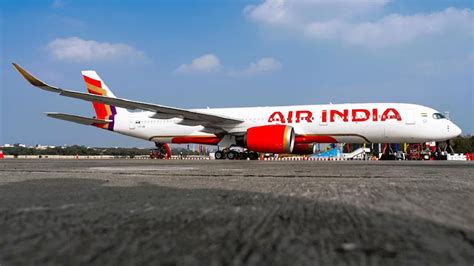
U.S. Air Force F-22 Raptors flew alongside privately-owned MiG fighter jets at a Reno, Nevada air show, honoring the founder of a unique squadron that secretly evaluated Soviet aircraft during the Cold War. The unprecedented formation commemorated retired U.S. Air Force Colonel Gail Peck, who established the 4477th Test and Evaluation Squadron, nicknamed the “Red Eagles” or “Constant Peg,” at Groom Lake, Nevada (Area 51) in 1979.
The historic flyover at the Reno Stead Airport National Championship Air Races on Saturday, June 15th, featured two F-22 Raptors from Nellis Air Force Base alongside two MiG-21s and a MiG-17, all operated by Draken International, a civilian company that provides adversary air support to the U.S. military. “It was a fitting tribute to Col. Peck and the legacy of the Red Eagles, who played a crucial role in preparing U.S. fighter pilots for potential aerial combat against Soviet-designed aircraft,” said a spokesperson for the airshow. The event provided a rare opportunity to see modern American airpower displayed in conjunction with the aircraft that once represented a significant threat.
Colonel Gail Peck, a distinguished fighter pilot and test pilot, recognized the critical need for American pilots to understand the capabilities and limitations of Soviet aircraft. During the Cold War, the United States obtained various Soviet-made fighters through clandestine means, including defections and covert purchases. These aircraft were then meticulously evaluated and flown by the Red Eagles squadron, whose mission was to develop effective tactics and training programs to counter potential adversaries.
The 4477th Test and Evaluation Squadron operated in secrecy for nearly a decade, from 1979 to 1988. During this time, its pilots logged thousands of flight hours in MiG-17s, MiG-21s, and MiG-23s, meticulously documenting their performance characteristics and vulnerabilities. This knowledge was then disseminated to U.S. Air Force, Navy, and Marine Corps fighter pilots through specialized training courses, significantly enhancing their combat readiness.
The Red Eagles program was declassified in the mid-1990s, revealing a fascinating chapter in Cold War aviation history. The squadron’s contributions were considered invaluable, providing American pilots with a decisive advantage in aerial engagements. Many of the tactics and techniques developed by the Red Eagles remain relevant today, as Soviet-designed aircraft continue to be used by various air forces around the world.
Draken International, the company that provided the MiG aircraft for the Reno air show, plays a vital role in modern military training. The company operates a fleet of former military aircraft, including MiG-21s, MiG-17s, A-4 Skyhawks, and L-159E ALCAs, providing realistic and challenging adversary air support to U.S. and allied forces. Their services help to ensure that fighter pilots are prepared to face a wide range of threats in contemporary combat environments.
The flyover at the Reno Air Races served as a powerful reminder of the ingenuity and dedication of the Red Eagles squadron and the importance of understanding potential adversaries. It also highlighted the continued relevance of adversary air support in maintaining a strong and prepared military force. The event drew considerable attention, with aviation enthusiasts and history buffs eager to witness the unique formation of American and Soviet-designed aircraft.
The choice of the Reno Air Races as the venue for this tribute was particularly fitting, given the event’s long history of celebrating aviation and showcasing the skills of pilots and aircraft. The air races attract a large and knowledgeable audience, providing an ideal platform for honoring the legacy of the Red Eagles and highlighting the importance of military aviation. The event not only entertained but also educated attendees about a crucial aspect of Cold War history and its continuing impact on modern military training.
“Seeing the F-22s fly alongside the MiGs was truly a sight to behold,” said one attendee, a former Air Force pilot. “It was a powerful reminder of the sacrifices made by the Red Eagles and the critical role they played in ensuring our air superiority.” The event was widely praised for its historical significance and its ability to connect with both aviation enthusiasts and the general public.
The collaboration between the U.S. Air Force and Draken International for this event underscores the ongoing commitment to honoring the legacy of the Red Eagles and ensuring that future generations of pilots understand the importance of their contributions. The flyover served as a poignant tribute to Colonel Gail Peck and the men and women of the 4477th Test and Evaluation Squadron, whose dedication and expertise helped to shape the course of Cold War aviation history.
The legacy of the Red Eagles extends beyond the Cold War, influencing modern air combat training and tactics. The principles they established – understanding the enemy’s capabilities, developing effective countermeasures, and providing realistic training – remain essential for maintaining air superiority in an ever-changing global landscape. The Reno airshow flyover was more than just a display of aircraft; it was a celebration of innovation, courage, and the enduring pursuit of excellence in military aviation. The flyover represents a bridge between the past and the present, honoring the sacrifices of those who served while inspiring future generations to continue pushing the boundaries of aviation technology and tactical expertise. The event also highlighted the evolving nature of military partnerships, with civilian companies like Draken International playing an increasingly important role in supporting military readiness.
The event was meticulously planned and executed, involving close coordination between the U.S. Air Force, Draken International, and the organizers of the Reno Air Races. Safety was the top priority, with all pilots undergoing extensive training and adhering to strict flight protocols. The flyover was a testament to the professionalism and dedication of all involved, demonstrating the commitment to honoring the legacy of the Red Eagles while ensuring the safety of participants and spectators. The success of the event serves as a model for future collaborations between the military and civilian sectors in commemorating historical events and promoting aviation education. The organizers hope that the flyover will inspire future generations to pursue careers in aviation and to appreciate the importance of military service.
The impact of the Red Eagles on aviation history is undeniable. Their work provided invaluable insights into Soviet aircraft, enabling American pilots to develop effective tactics and maintain air superiority. The declassification of the Red Eagles program revealed a fascinating and previously unknown chapter in Cold War history, shedding light on the clandestine efforts undertaken to understand and counter Soviet military technology. The Reno airshow flyover was a fitting tribute to their legacy, honoring their contributions and ensuring that their story continues to be told. The event also served as a reminder of the importance of adaptability and innovation in the face of evolving threats, a lesson that remains relevant in today’s complex security environment. The collaboration between the U.S. Air Force and Draken International highlights the ongoing commitment to maintaining a strong and prepared military force, capable of meeting the challenges of the 21st century.
The Reno Air Races provided a unique and fitting backdrop for this historic event. The air races have a long and storied history, attracting aviation enthusiasts from around the world. The event offers a thrilling spectacle of aerial competition, showcasing the skills of pilots and the performance of aircraft. The decision to include the Red Eagles tribute in the air races program was a testament to the event’s commitment to celebrating aviation history and honoring the contributions of those who have served in the military. The flyover was a highlight of the air races, drawing widespread attention and generating significant media coverage. The event helped to educate the public about the Red Eagles program and its importance in Cold War history. The Reno Air Races continue to play a vital role in promoting aviation education and inspiring future generations of pilots and aviation professionals.
The Red Eagles’ story is a testament to the power of human ingenuity and the importance of understanding one’s adversary. Their dedication to their mission, despite the risks and challenges involved, helped to ensure the safety and security of the United States during the Cold War. The Reno airshow flyover was a fitting tribute to their legacy, honoring their contributions and ensuring that their story is not forgotten. The event served as a reminder of the importance of military preparedness and the need to constantly adapt to evolving threats. The collaboration between the U.S. Air Force and Draken International highlights the ongoing commitment to maintaining a strong and capable military force, ready to defend the nation’s interests. The event also underscored the importance of honoring those who have served in the military and recognizing their sacrifices.
The flyover was a poignant reminder of the Cold War era and the tensions that defined that period. It also highlighted the importance of international cooperation and understanding in maintaining peace and security. The event served as a reminder of the sacrifices made by those who served in the military during the Cold War and the importance of honoring their legacy. The collaboration between the U.S. Air Force and Draken International demonstrates the ongoing commitment to learning from the past and working together to build a more secure future. The Reno airshow flyover was a fitting tribute to the Red Eagles and a reminder of the enduring importance of military preparedness and international cooperation. The event also served as a celebration of aviation and the human spirit of innovation and adventure. The air races provide a unique and exciting platform for showcasing the skills of pilots and the performance of aircraft, while also promoting aviation education and inspiring future generations of aviation professionals.
The impact of the Red Eagles extends far beyond the Cold War era. Their innovative training techniques and their commitment to understanding the enemy continue to influence military aviation today. The Reno airshow flyover was a testament to their enduring legacy and a reminder of the importance of military preparedness. The event also served as a celebration of aviation and the human spirit of innovation and adventure. The collaboration between the U.S. Air Force and Draken International highlights the ongoing commitment to maintaining a strong and capable military force, ready to defend the nation’s interests. The event underscored the importance of honoring those who have served in the military and recognizing their sacrifices. The Red Eagles’ story is a reminder that vigilance and adaptability are essential for maintaining peace and security in an ever-changing world.
The Reno Air Races provided a spectacular backdrop for this historic event. The air races attract aviation enthusiasts from around the world, offering a thrilling display of aerial competition and showcasing the skills of pilots and the performance of aircraft. The inclusion of the Red Eagles tribute in the air races program was a testament to the event’s commitment to celebrating aviation history and honoring the contributions of those who have served in the military. The flyover was a highlight of the air races, generating widespread attention and media coverage. The event helped to educate the public about the Red Eagles program and its importance in Cold War history. The Reno Air Races continue to play a vital role in promoting aviation education and inspiring future generations of pilots and aviation professionals. The Red Eagles’ legacy serves as an inspiration to those who aspire to excel in aviation and to contribute to the defense of their country.
The Reno airshow flyover was a remarkable tribute to the Red Eagles, honoring their legacy and celebrating their contributions to military aviation. The event served as a reminder of the Cold War era and the importance of military preparedness. The collaboration between the U.S. Air Force and Draken International highlights the ongoing commitment to maintaining a strong and capable military force, ready to defend the nation’s interests. The event underscored the importance of honoring those who have served in the military and recognizing their sacrifices. The Red Eagles’ story is a testament to the power of human ingenuity and the importance of understanding one’s adversary. The flyover was a fitting tribute to their legacy, ensuring that their story is not forgotten.
Frequently Asked Questions (FAQ)
1. What was the 4477th Test and Evaluation Squadron, also known as the “Red Eagles” or “Constant Peg”?
The 4477th Test and Evaluation Squadron, also known as the “Red Eagles” or “Constant Peg,” was a top-secret U.S. Air Force squadron established in 1979 at Groom Lake, Nevada (Area 51). Its primary mission was to evaluate and exploit Soviet-made fighter aircraft obtained through various clandestine means. According to historical records, the squadron’s purpose was to develop effective tactics and training programs to counter potential adversaries equipped with Soviet technology. Colonel Gail Peck founded the squadron, recognizing the urgent need for American pilots to understand the capabilities and limitations of Soviet aircraft. The unit operated in secrecy for nearly a decade, playing a crucial role in preparing U.S. fighter pilots for aerial combat against Soviet-designed aircraft. The declassification of the Red Eagles program in the mid-1990s revealed a fascinating and previously unknown chapter in Cold War aviation history.
2. Why did the U.S. Air Force create the Red Eagles squadron?
The U.S. Air Force created the Red Eagles squadron to gain a comprehensive understanding of Soviet-made fighter aircraft. During the Cold War, the United States faced a significant threat from the Soviet Union and its allies, who possessed a large and technologically advanced air force. By obtaining and evaluating Soviet aircraft, the Red Eagles squadron could identify their strengths and weaknesses, and develop effective tactics to counter them. This knowledge was crucial for ensuring American air superiority in the event of a conflict. As stated by a military historian, “The Red Eagles program was a critical component of U.S. Cold War strategy, providing invaluable insights into Soviet military technology.”
3. How did the Red Eagles obtain Soviet-made aircraft?
The Red Eagles obtained Soviet-made aircraft through various clandestine means, including defections, covert purchases, and intelligence operations. Some aircraft were acquired when pilots from Soviet-aligned countries defected to the West, bringing their aircraft with them. Other aircraft were purchased through front companies or intermediaries, often in countries with close ties to the Soviet Union. These operations were highly secretive and required careful planning and execution. The exact details of how specific aircraft were acquired remain classified, but it is known that the U.S. government invested significant resources in obtaining Soviet military technology. Once acquired, the aircraft were meticulously maintained and flown by the Red Eagles squadron, who documented their performance characteristics and vulnerabilities.
4. What was Draken International’s role in the Reno air show flyover?
Draken International, a civilian company that provides adversary air support to the U.S. military, supplied the MiG-21s and MiG-17 for the Reno air show flyover. Draken International operates a fleet of former military aircraft, including Soviet-designed fighters, which it uses to provide realistic and challenging training scenarios for U.S. and allied forces. Their participation in the air show was a tribute to the Red Eagles squadron and a demonstration of the continued relevance of adversary air support in modern military training. The company’s involvement highlights the increasing role of civilian contractors in supporting military readiness.
5. What is the significance of honoring Colonel Gail Peck, the founder of the Red Eagles squadron?
Honoring Colonel Gail Peck, the founder of the Red Eagles squadron, is significant because it recognizes his vision, leadership, and dedication to improving U.S. air combat capabilities. Colonel Peck recognized the critical need to understand Soviet aircraft and took the initiative to establish the Red Eagles squadron, despite the challenges and risks involved. His efforts were instrumental in ensuring American air superiority during the Cold War. The tribute at the Reno air show was a fitting way to honor his legacy and to acknowledge the contributions of the men and women who served in the Red Eagles squadron. According to a former Red Eagles pilot, “Colonel Peck was a true pioneer, and his leadership was essential to the success of the squadron.”









